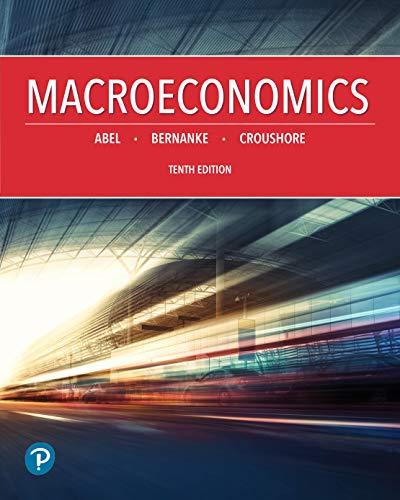1. 3. When the real interest rate increases, banks have an incentive to lend a greater portion...
Question:
1. 3. When the real interest rate increases, banks have an incentive to lend a greater portion of their deposits, which reduces the reserve–deposit ratio. In particular, suppose that res = 0.4−2r, where res is the reserve–deposit ratio and is the real interest r
rate. The currency–deposit ratio is 0.4, the price level is fixed at 1.0, and the monetary base is 60. The real quantity of money demanded is L(Y, i) = 0.5Y −10i, where is real output and is the nominal interest rate. Assume Y
i that expected inflation is zero so that the nominal interest rate and the real interest rate are equal.
a. If r =i=0.10, what are the reserve–deposit ratio, the money multiplier, and the money supply? For what real output, Y, market?
does a real interest rate of 0.10 clear the asset
b. Repeat part
(a)
for r =i=0.05
.
c. Suppose that the reserve–deposit ratio is fixed at the value you found in part rates. If r =i=0.05,
(a)
and isn’t affected by interest for what output, market clear in this case?
Y, does the asset
d. Is the LM curve flatter or steeper when the reserve deposit ratio depends on the real interest rate than when the reserve–deposit ratio is fixed? Explain your answer in economic terms.
Step by Step Answer:







